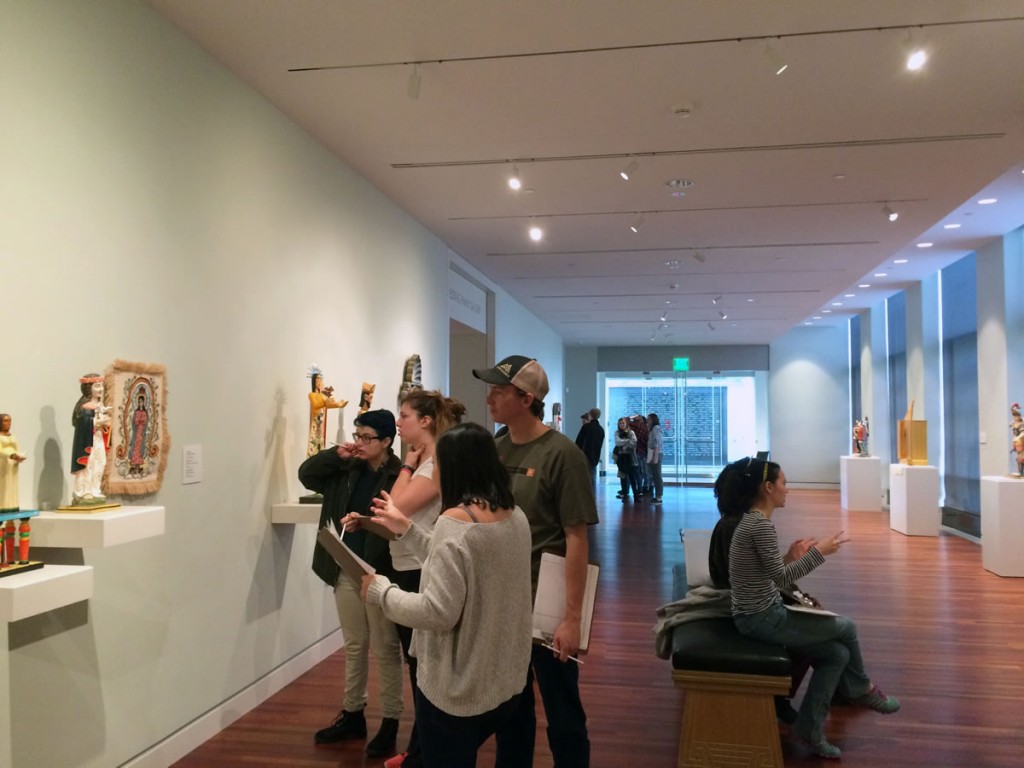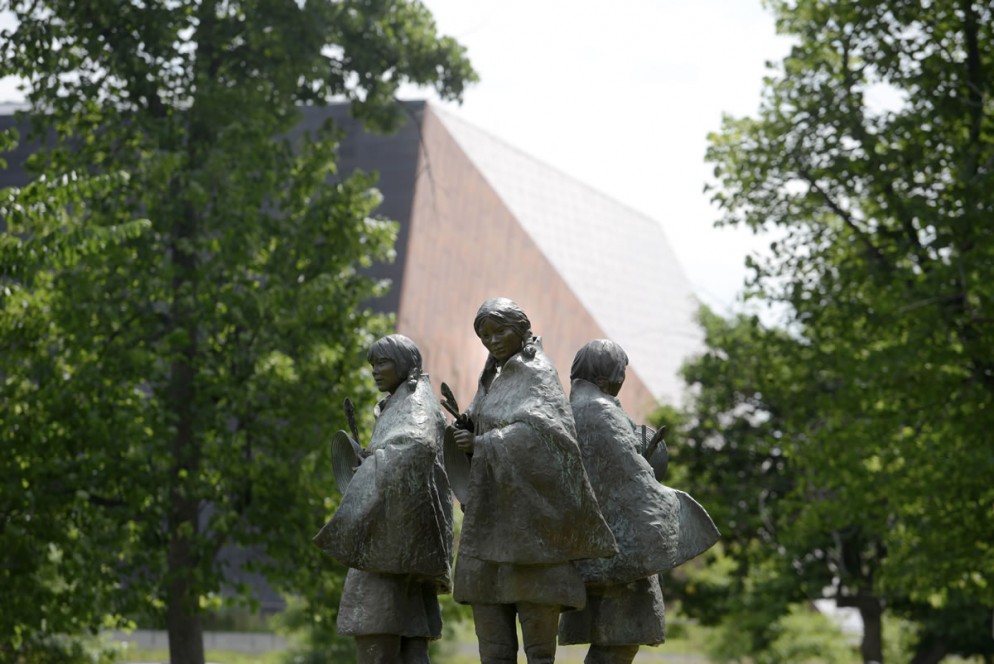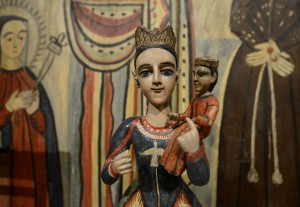Imagine a course in which Colorado College students regularly handle culturally significant pieces of Southwestern art that spans prehistoric to contemporary time, and collaborate with visiting scholars, practicing artists, tribal leaders, and museum specialists to learn more about the rich heritage of these objects.
Imagine Colorado College faculty members integrating a collection of nearly 20,000 pieces of Southwestern Native American and Spanish colonial art into their curriculum, exploring new, innovative ways of developing experiential learning, and using objects to incorporate nontraditional and marginalized voices to enrich and deepen a student’s perspective.
Imagine connecting the broader regional community to Colorado College’s academic life and providing learning opportunities through a series of targeted outreach activities designed to engage previously underserved populations, fostering diverse, multicultural perspectives, and creating a stronger arts and culture profile for the city.
A pending alliance between Colorado College and the Colorado Springs Fine Arts Center would help achieve key Colorado College strategic objectives while also helping to create significant financial stability for the Fine Arts Center and solidify a community goal of sustainable, ongoing community fine arts programming. The partnership between the two provides vast opportunities to create a new future for the arts at CC and for the greater Colorado Springs region.
Leaders at both institutions are reviewing the potential structure of such a partnership, which they term a “win-win-win” for all involved. The FAC, located on the same block as CC’s Packard Hall, includes a theatre, art school, and fully accredited museum that houses more than 20,000 art objects acquired over the last 80 years. This includes Alice Bemis Taylor’s significant collection of Native American and early Hispanic art, as well as Western American, modern, and contemporary art. The physical proximity of the two organizations, as well as their aligned missions, reinforces Cascade Avenue as a cultural corridor in Colorado Springs.
The established precedent of working together, dating back to the FAC’s founding, makes it a natural alliance, says Colorado College President Jill Tiefenthaler. “This is a big undertaking and we want to do it right,” she says. “We’re excited about the potential this has for all involved.”
As she did five years ago upon becoming president of CC, Tiefenthaler intends to listen before implementing changes. “We want to hear from those who are committed to the Fine Arts Center as well as bring in new voices,” she says. She will embark on an initial Year of Planning before changes are made, and then will do so gradually, exploring museum operations the second year, the Bemis School of Art the third year, and theatre operations the fourth year.
The partnership with the Fine Arts Center supports Colorado College’s desire to capitalize on its sense of place, strengthen its ties within the community, and push the boundaries of learning beyond the classroom and into the field, all initiatives of CC’s strategic plan.
While a Colorado College alliance with the Fine Arts Center would strengthen programs such as Southwest studies, anthropology, art, and museum studies, students in other disciplines would benefit as well, says Professor of Art Rebecca Tucker. “Any class interacting with objects can develop skills such as observation, analysis, interpretation, and framing of multidisciplinary questions,” she says. “These skills apply to botany students as much as art students. Anything you show can spark questions around any topic.
“With our Block Plan, emphasis on field study, and experiential learning, CC would be a national leader in teaching with museums.”

As part of a unit on cultural identities, students analyze historic devotional artworks in the Colorado Springs Fine Arts Center’s Spanish Colonial collection and compare them to interpretations of religious themes by contemporary Hispanic artists. Riley Scholar-in-Residence Jennifer Lozano worked with Jessica Hunter-Larsen ’90 on the assignment for her class, Topics in Literature: Introduction to Mexican American Literature and Culture. Photo by Jessica Hunter-Larsen ’90
Many CC students already have enhanced their learning through resources at the Fine Arts Center. Kate Smith ’14 and Grace Gahagan ’14 worked as collections interns after taking Introduction to Museum Studies with InterDisciplinary Experimental Arts (IDEA) Curator Jessica Hunter-Larsen ’90. Each was granted permission to curate exhibitions from the FAC collections as the capstone project for their museum studies minor. Additionally, Abby Stein ’15 worked with Fine Arts Center Registrar Michael Howell and area tribal elders to repatriate several objects in the Southwest Collection in compliance with the Federal Native American Graves Repatriation Act.
“It’s a place for us to do what we’re already doing even better; things such as innovative teaching, community-based learning, working with underserved populations, increasing relevance, heightening our sense of place, building on the Block Plan, and fostering innovation,” says Tucker. “This alliance gives the college a stronger partnership with the community, and helps us envision new possibilities for both the region and the college in arts programming.”
Both Tiefenthaler and Tucker note that many liberal arts colleges and universities have museums, including Yale University, Harvard University, Williams College, Colby College, Smith College, Amherst College, Dartmouth University, Bowdoin College, and Oberlin College.
“The IDEA Space has given us a tantalizing glimpse of what we can do,” Tucker says. “We already do this well. Think of what we can do on a bigger scale.”
Eric Perramond, associate professor of environmental science and Southwest Studies, says the alliance between the FAC and CC would allow Southwest Studies students to gain direct access and cultivate expertise in the arts, material culture, and museum studies, all of which are strong interests for some recent graduates. “Our boundaries as faculty were pushed last year, for example, as we had two Southwest majors doing, respectively, projects on turquoise in the Southwest and on Navajo textiles and wool-sourcing,” Perramond says.
Under the pending alliance, the Colorado Springs Fine Arts Center will become part of Colorado College’s operations, and after a phased transition period will be known as the Colorado Springs Fine Arts Center at Colorado College. To date, each organization’s board of trustees has voted to proceed with the process of formalizing an alliance between the FAC and CC, with legal documentation that codifies and details the operational structure currently being drawn up.
Editor’s note: A final agreement had not been completed at press time.
Also see: History of Collaboration Between the Colorado Springs Fine Arts Center and Colorado College

